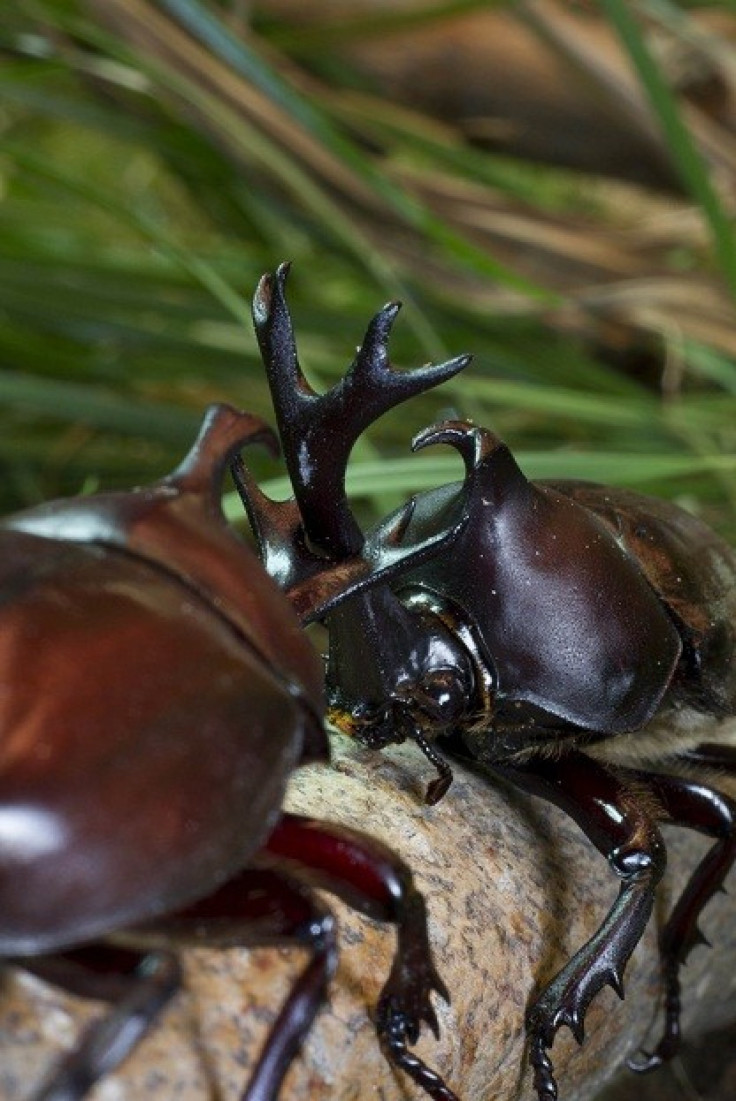Beetle Horns Get Size Enhancement From Insulin: Study

Diabetic people aren't the only ones that have to worry about their insulin levels. For rhinoceros beetles, insulin may be the key to growing big forked horns to impress the ladies, according to a new paper appearing in the journal Science.
Michigan State University zoologist Ian Dworkin and his colleagues from the University of Montana and Washington State University already knew that insulin sensitivity can affect growth in insects. Previous studies have found that fruit flies with genetic mutations that impair their insulin signaling pathways end up with shorter wings (as well as impaired brain and retinal function).
Insulin, Dworkin said in a phone interview, is "this key signal that lets the body know how much food we've eaten and how much of those reserves we can use for growth."
To test whether insulin was a key factor in the beetles' horn growth, the researchers injected immature male rhinoceros beetles with genetic material that interfered with their insulin receptors, thereby reducing their sensitivity to insulin. They performed the injection at a precise phase in the beetle's life cycle when it had already reached its adult body size, but when certain structures like horns, wings and genitalia were still growing. That way, any insulin-related effects could be clearly observed by looking at those structures.
Injected beetles had about the same size genitals and slightly smaller wings than normal beetles. Their horns, though, were significantly smaller. On average, 16% smaller, to be precise.
Dworkin thinks that more work needs to be done to conclusively prove the insulin-horn connection, but also says their results could be evidence that the rhinoceros beetle's exaggerated horns are what evolutionary biologists call an "honest signal" that males use to advertise their fitness to potential mates.
In the beetle's case, the direct relationship of the horn to insulin-dependent developmental mechanisms means it's likely difficult or impossible for low quality males to "cheat" by producing full-sized horns of their own, the authors argue in their paper.
Dworkin and his colleagues also think that insulin pathways could play a key role in other male sexual signals in the animal kingdom, like the horns of elks or the tails of peacocks.
Big horns are a bit of trade-off - some studies in dung beetles have suggested that investing in horns means the insect can't invest as much in their reproductive organs. But the rhinoceros beetle's horns are thought to be a good bet, attracting mates by advertising fitness in two respects: both their ability to grow them and their ability to survive with such unwieldy appendages.
"The males are saying, 'look, I have such a big structure, I can deal with the badness of having big horns,'" Dworkin said.
SOURCE: Emlen et al. "A Mechanism of Extreme Growth and Reliable Signaling in Sexually Selected Ornaments and Weapons." Science published online ahead of print 26 July 2012.
--
© Copyright IBTimes 2024. All rights reserved.











